This article was medically reviewed by Luba Lee, FNP-BC, MS and by wikiHow staff writer, Danielle Blinka, MA, MPA. Luba Lee, FNP-BC is a Board-Certified Family Nurse Practitioner (FNP) and educator in Tennessee with over a decade of clinical experience. Luba has certifications in Pediatric Advanced Life Support (PALS), Emergency Medicine, Advanced Cardiac Life Support (ACLS), Team Building, and Critical Care Nursing. She received her Master of Science in Nursing (MSN) from the University of Tennessee in 2006.
There are 12 references cited in this article, which can be found at the bottom of the page.
This article has been viewed 82,942 times.
Whether it’s minor or serious, properly treating a burn is important. Unfortunately, burns increase your risk of infection, as the damage to your skin lowers your immune system's response.[1] Fortunately, you can make a full recovery! After experiencing a burn, immediately provide proper, consistent care to ensure it heals properly. As it heals, watch for symptoms of infection. If you suspect an infection, visit your doctor for a diagnosis. It’s important you immediately treat an infected burn to prevent further complications.
Steps
Recognizing Symptoms of Infection
-
1Notice if your pain level around the burn increases. Burns commonly cause pain, which can worsen in the days after your burn starts to heal. However, it should start to improve after the initial spike in pain, if you provide proper care, change your dressings as directed, and care for your body. If your pain continues to worsen or suddenly increases, you may have an infection. Get your burn examined by a doctor to get a proper diagnosis.[2]
-
2Check the burn for discoloration, ranging from deep purple to red. Discoloration can occur by itself or along with swelling. You might notice the redness around the burn is getting darker or pink skin has turned red. In some cases, an infected burn may take on a purplish color, similar to a bruise.[3]
- Although minor changes in color may occur as part of the healing process, greenish or purplish discolorations, especially if accompanied by pain and swelling, should be checked out by your doctor to rule out infection.
Advertisement -
3Watch for swelling around the burn. Swelling often occurs after a burn, regardless of whether or not it’s infected. However, an infection can cause the swelling to worsen. If you have an infection, you’ll also likely notice other symptoms in addition to swelling.[4]
-
4Look for pus or liquid oozing from the burn. Pus or discharge may develop as your body tries to heal the wound.[5] The discharge or pus may be clear or green. No matter the color, any discharge or pus is a sign you need medical treatment.
- The pus or discharge can come from broken skin around the burn, or it might come from broken blisters.
-
5Notice if your burn starts to smell bad. You may be able to smell the burn itself, or you might notice that your bandages are very smelly. This can be a sign of infection, so you’ll want to get the burn checked by your doctor.[6]
- Additionally, you might notice a smelly discharge.
-
6Check to see if you have a fever. Fever is a common sign of infection, including after a burn. Call your doctor if your temperature rises to 38 °C (100 °F) or higher.[7]
- A fever by itself may not mean your burn is infected. However, it’s best to see your doctor just in case.
-
7Notice if the burn or blister worsens or fails to improve after 2 weeks. Sometimes a burn may not show typical signs of infection. However, if it’s not healing or starts to look worse, then you should see your doctor. They can check the wound to see if you need additional treatments.[8]
- Do not try to break or pop a blister. This will not help it heal faster. Instead, you’ll increase your risk of an infection.[9]
-
8Get immediate care for vomiting and dizziness. These symptoms can indicate sepsis or Toxic Shock Syndrome (TSS), which can occur after a burn. These symptoms may occur alongside other symptoms of infection, especially fever. Sepsis and TSS are both emergency situations that can be life threatening, so visit a doctor immediately.[10]
- Sepsis is a common risk after you experience a burn. It can quickly worsen and enter your bloodstream, where it can damage your organs. With immediate medical treatment, however, you can recover.[11]
Getting a Diagnosis
-
1Visit your doctor or an urgent care center. It’s important that you see the doctor as soon as you notice signs of infection. Call your doctor for a same day appointment. If they can’t get you in, visit an urgent care center. They’ll perform a physical examination and take cultures from your burn to look for an infection. Finally, they’ll prescribe treatment.[12]
- If you suspect your burn is infected, don’t hesitate to get treatment. Sepsis can quickly become serious and requires immediate treatment, so don’t risk your health.[13]
-
2Allow the doctor to swab your burn wound. The doctor will swab the wound to check for infection. In most cases, they’ll take several swabs from different parts of the burn. The swab will be sent to the lab for testing so you get the treatment you need. If an infection is present, the doctor can prescribe a treatment plan.[14]
- The doctor can take swabs of pus or discharge, but they can swab even if none is present.
-
3Get a burn biopsy, if necessary. Burn biopsies are more likely to be taken if your burn is a 2nd or 3rd degree burn. Your doctor will take a small biopsy by removing skin cells from around the wound. Although this may cause discomfort, the doctor can numb the area.[15]
- For a large burn, the doctor will likely take a 1 centimeter (0.39 in) biopsy. In some cases, they may take more than 1 biopsy from different parts of the burn.
- For a smaller burn, they make take a 3 mm punch biopsy.
- The doctor may decide to take biopsies every few days or once a week until the burn is properly healing.
-
4Expect your doctor to monitor the burn for changes. Whether or not the doctor suspects an infection, they’ll want to monitor the burn until it fully heals to make sure it's healing properly. If the wound worsens or shows signs of infection, they’ll prescribe treatment.[16]
- During this period, the doctor may swab your burn wound often. Depending on the severity of the wound, they may swab it daily or weekly as the burn heals.
Treating an Infected Burn
-
1Take antibiotics as prescribed by your doctor to treat infection. Your doctor will likely prescribe antibiotics if your burn shows signs of infection. Make sure you finish the entire course of treatment, even if the burn starts to show improvement. You need to use all of the medicine, or the infection may rebound.[17]
- If you’re treating the burn at home, the doctor will likely prescribe oral or cream antibiotics.
- If you’re in the hospital, you’ll likely be given antibiotics through an IV.[18]
-
2Apply a burn cream as directed by your doctor. Burn creams are most common in the early stages of burn treatment. They help keep the burn moist, limit your risk of infection, and decrease pain. The doctor will likely prescribe a burn cream and provide a treatment schedule.[19]
- Follow all of your doctor’s instructions for using the burn cream.
- Aloe can also be a good treatment for your burn, especially if it’s a small burn. However, check with your doctor before you use it.
-
3Change your dressings at least twice a day or as directed. Your bandages will help keep your burn moist while it heals. They also protect your burn from dirt and germs. At a minimum, change them once in the morning and once in the evening. However, your doctor may recommend changing them more often, so always follow their instructions.[20]
- Always use sterile bandages, such as a non-stick gauze secured with medical tape. Don’t use reusable bandages.
- You can apply your burn cream before you replace your bandages.
- If your burn is serious, painful, or out of reach, get someone to help you change your bandages. If you’re being treated in a hospital, the nurses will change your bandages.
-
4Use OTC NSAIDs for pain and swelling, if advised by your doctor. Pain and swelling after a burn are common symptoms. For mild pain and swelling, over-the-counter (OTC) Nonsteroidal Anti-Inflammatory Drugs (NSAIDs), such as ibuprofen, Advil, Motrin, or naproxen, can help. Use them as directed on the label, unless your doctor recommends you take more.[21]
- Don’t take anything without first talking to your doctor, especially if you’re taking other medications.
-
5Ask your doctor about prescription painkillers, if your pain is intense. Burns can cause extreme pain, especially if they become infected. Fortunately, your doctor can prescribe painkillers if your pain feels unbearable. Since they’re not right for everyone, however, talk to your doctor to find out if they might be a good option for you.[22]
- Don’t use painkillers without your doctor’s permission, especially if you’re taking other medications.
- Painkillers can be very addictive, so always use them exactly as your doctor directs.
- In some cases, you might use the painkillers specifically when changing your bandages.
-
6Talk to your doctor about anxiety medication, if you have a serious burn. Most burn patients do not need anxiety medications. However, they can help if your burn is causing you a lot of pain and stress or if you have a lot of anxiety about changing your bandages.[23]
- Take your medication as directed.
- Anxiety medications have side effects. Common side effects include nausea, increased saliva, blurred vision, headache, tiredness, joint or muscle pain, dizziness, nightmares, lack of coordination, cognitive issues, confusion, frequent urination, or sexual issues. You may also become dependent on them.[24]
-
7Get a tetanus shot if you’re behind on your booster shots. Since burns can break your skin, it’s possible to get a tetanus infection after a burn. After a burn, the tetanus booster can help limit complications and infection. A nurse can administer the shot if you need it.[25]
- Doctors recommend getting a tetanus booster every 5 years.[26]
- Ask your doctor if getting the booster is right for you.
- In some cases, you can expect to receive the Tdap vaccine after a burn. It's approved by the CDC for use by people aged 65 and over.
Warnings
- Burn infections can quickly become serious, so get immediate medical care.⧼thumbs_response⧽
References
- ↑ https://www.nhs.uk/conditions/burns-and-scalds/complications/
- ↑ https://my.clevelandclinic.org/health/diseases/12063-burns#diagnosis-and-tests
- ↑ https://uihc.org/health-topics/caring-your-burn-after-hospitalization
- ↑ https://uihc.org/health-topics/caring-your-burn-after-hospitalization
- ↑ https://uihc.org/health-topics/caring-your-burn-after-hospitalization
- ↑ https://www.nhs.uk/conditions/burns-and-scalds/complications/
- ↑ https://uihc.org/health-topics/caring-your-burn-after-hospitalization
- ↑ https://my.clevelandclinic.org/health/diseases/12063-burns#diagnosis-and-tests
- ↑ https://health.clevelandclinic.org/blisters-causes-treatments-and-why-you-should-never-pop-them/
- ↑ https://www.ncbi.nlm.nih.gov/pmc/articles/PMC1471990/
- ↑ https://www.nhs.uk/conditions/sepsis/treatment-and-recovery/
- ↑ https://www.nhs.uk/conditions/burns-and-scalds/complications/
- ↑ https://www.nhs.uk/conditions/sepsis/treatment-and-recovery/
- ↑ https://www.ncbi.nlm.nih.gov/pmc/articles/PMC1471990/
- ↑ https://www.ncbi.nlm.nih.gov/pmc/articles/PMC1471990/
- ↑ https://www.ncbi.nlm.nih.gov/pmc/articles/PMC1471990/
- ↑ https://www.nhs.uk/conditions/burns-and-scalds/complications/
- ↑ https://www.mayoclinic.org/diseases-conditions/burns/diagnosis-treatment/drc-20370545
- ↑ https://medlineplus.gov/ency/patientinstructions/000662.htm
- ↑ https://uihc.org/health-topics/caring-your-burn-after-hospitalization
- ↑ https://medlineplus.gov/ency/patientinstructions/000662.htm
- ↑ https://my.clevelandclinic.org/health/treatments/12058-pain-relievers
- ↑ https://my.clevelandclinic.org/health/treatments/12058-pain-relievers
- ↑ https://www.nimh.nih.gov/health/topics/mental-health-medications/index.shtml
- ↑ https://www.uptodate.com/contents/skin-burns-beyond-the-basics#H13
- ↑ https://www.cdc.gov/tetanus/clinicians.html
- ↑ https://www.nhs.uk/conditions/burns-and-scalds/complications/


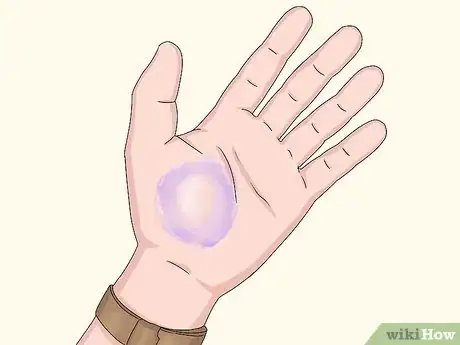
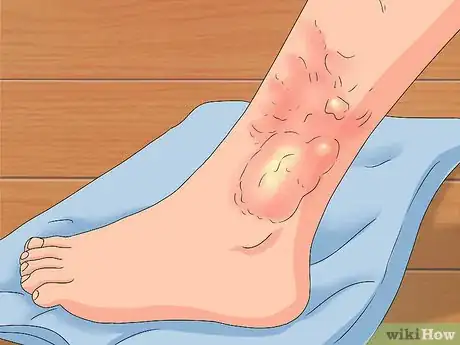
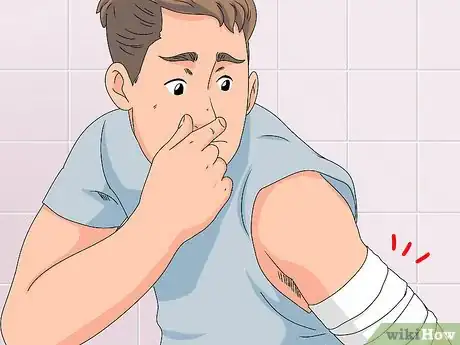


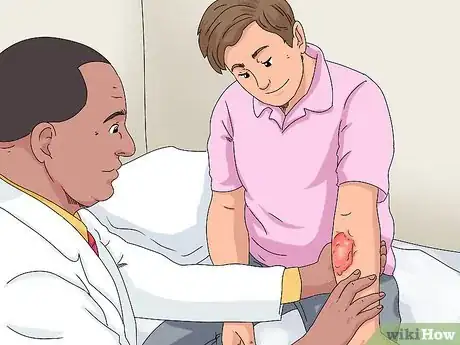
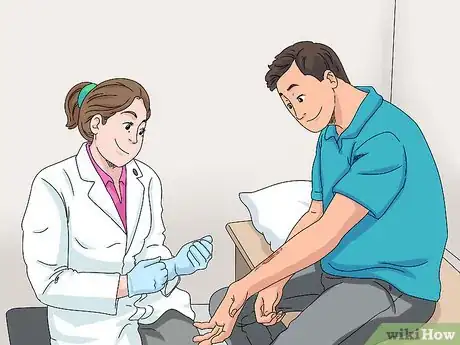
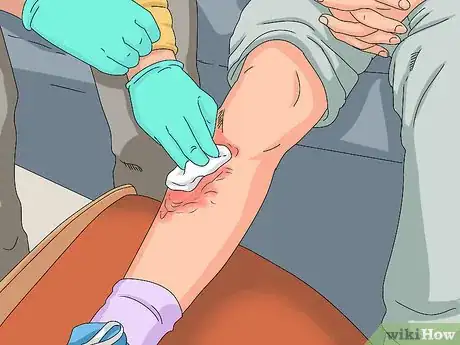

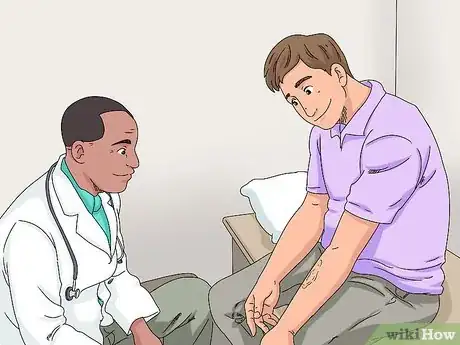


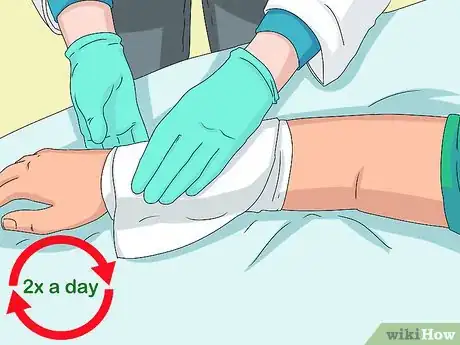

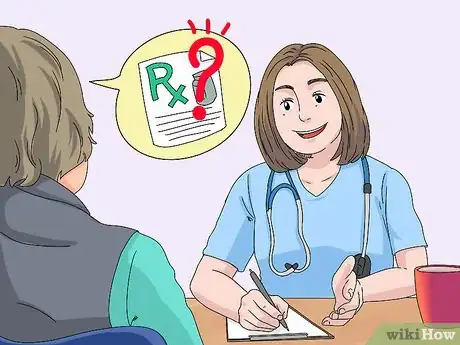

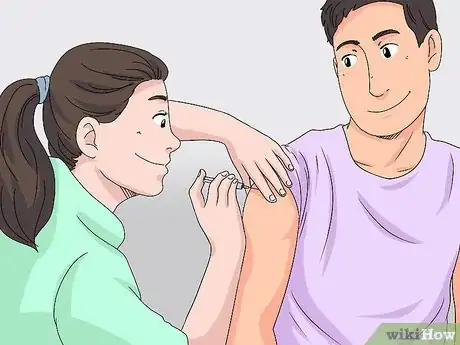
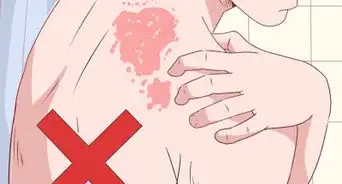




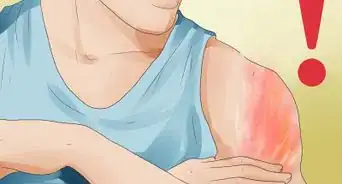


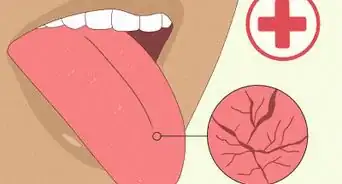

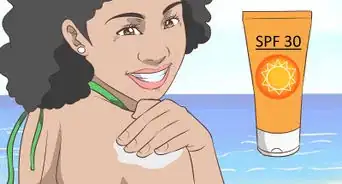
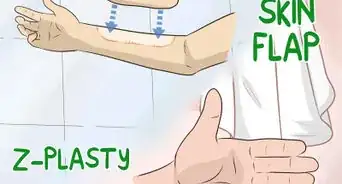

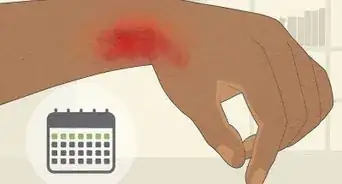







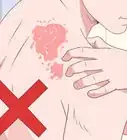

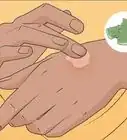




































Medical Disclaimer
The content of this article is not intended to be a substitute for professional medical advice, examination, diagnosis, or treatment. You should always contact your doctor or other qualified healthcare professional before starting, changing, or stopping any kind of health treatment.
Read More...